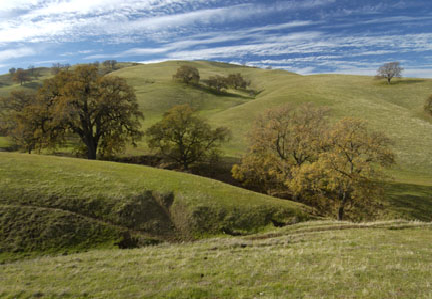Most of my career in marketing writing was spent at PeopleSoft, a business software outfit, which during my tenure grew from 100 employees to 12,000 by the time it was devoured by Oracle in 2004. (As manager of PeopleSoft Creative Services writers, I attempted to mentor, guide, and sometimes restrain several of the Content Bureau’s current stable of high performers. Disclaimer: I was responsible for hiring the CB to do a number of writing jobs for PeopleSoft—we gave them the most difficult projects and they consistently produced stellar work.)
When I joined PeopleSoft in 1991, we were a startup with 100 people and ten or 15 customers. And a young software product. So a key goal was to make the company seem established and older than it actually was. One of my favorite—and slightly embarrassing—lines, penned for our first corporate brochure, was that PeopleSoft had been delivering software “for nearly half a decade.” The software was about three years old at that point. I felt good about using the word “decade”, thinking it might convince prospects that our products were mature and bug-free. It was sly and manipulative, too—but truthful. Three years—that’s nearly half a decade, right?
You have to tell the truth when you’re writing marketing copy. I distinguish between writing marketing copy and ad copy because ad copy can break any rule. Ad copy can be truthful, but it can also lie, cheat, and deceive, and often does. Marketing writing can exaggerate but must stick to facts. As marketing writers at PeopleSoft, we were lucky because we had a good product, our customers loved us, and we had a good story to tell.
Kind of like the environment nonprofit I currently support: Save Mount Diablo, a copywriter’s dream client. SMD’s goal is to “preserve, defend, and restore the natural lands on and around the mountain.” Easy. Who doesn’t want to preserve natural lands? Who’s against restoring oak trees and native grasses?

Doing marketing writing is a simple matter of telling the truth, eloquently. Try this description of Mangini Ranch in Concord:
Mangini Ranch’s 208 acres swirl with importance, winding sinuously through history, biology, and geography much like Galindo Creek, the green-lined, blue thread whose headwaters spring up there… There are several hidden springs and creek branches, beautiful groves of flowering buckeye, and increasing numbers of wildlife, some of them quite rare.
Yum. Don’t you want to read more?
There’s a “language of conservation”—what works and what doesn’t when we talk about conservation and environmentalism.
To identify what that language is, a few years ago The Trust for Public Lands and The Nature Conservancy commissioned a research firm, Fairbank, Maslin, Maullin & Associates to do opinion polling. Among their many findings:
- “DO talk about water FIRST and foremost…voters closely link land conservation with protecting water.”
- “DO NOT say ‘open space’…DO say ‘natural areas’ instead. In the focus groups, “natural areas” brought to mind images of trees, mountains, or water, such as streams or waterfalls.” (That’s why SMD’s tagline refers to “natural lands on and around the mountain.”)
Marketing writing—truthful, but sly and manipulative too.


